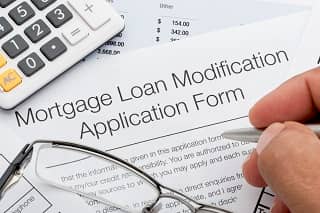 A Loan Estimate (LE) form is not just required by law. It's a powerful weapon in the battle for lower mortgage costs. If you want to negotiate a better mortgage rate, the Loan Estimate form is your pal, your buddy, and your ally. Mortgage lenders must provide one within three business days when you apply for a mortgage. But many will supply the disclosure when you're shopping for a home loan.
A Loan Estimate (LE) form is not just required by law. It's a powerful weapon in the battle for lower mortgage costs. If you want to negotiate a better mortgage rate, the Loan Estimate form is your pal, your buddy, and your ally. Mortgage lenders must provide one within three business days when you apply for a mortgage. But many will supply the disclosure when you're shopping for a home loan.
Find the best mortgage rate and closing costs
It used to be that mortgage offers were largely beyond understanding. The lender advertised financing at a low rate, but the closing costs might have been high. There were a lot of moving parts to consider, and unless you were a mortgage professional the system was largely stacked against you.
As a result of the 2007 housing crash, the marketplace was ripe for change. The new goal was to make the mortgage system as risk-free as possible. The reforms did away with most prepayment penalties, no-doc loans, mortgages with negative amortization, and 40-year loans. The new rules even required lenders to verify that the borrower had the ability to repay the loan!
And, to a large degree, the reforms have been successful. ATTOM Data Solutions reported last year that foreclosures in the third quarter reached their lowest level in 13 years. Fewer foreclosures mean less risk and less risk leads to lower rates. Everyone wins.
An important part of the mortgage reform effort was the introduction of two federal forms, the Loan Estimate (LE) and the Closing Disclosure (CD). It is the LE which gives borrowers leverage. And that leverage allows you to negotiate a better mortgage rate.
Related: How to Shop for a Mortgage
Loan estimate form & delivery
A lender who offers financing must provide a Loan Estimate form within three business days after you apply for a mortgage. In large type and bold print, the form outlines the lender's offer. Here are the major elements to review.
Basics
On Page One, you can find the loan amount, interest rate and monthly cost for principal and interest. Importantly, the form asks if these figures can change after closing. Look for three "no" answers.
Rate lock
You'll also see if the interest rate is locked or not locked. If locked, it also must state when the lock expires. If you qualify for financing, the lender must deliver the locked-in rate. But only if the loan closes before the interest rate lock expires.
If settlement is in 45 days, and the lock-in period is 30 days you will need to extend or re-lock your rate. Either option could be costly if rates have increased. Try to get a lock-in period which with a little wiggle room. A delayed closing could cause you to miss the lock-in deadline. Even if the delay is not your fault.
Related: Shopping for a Mortgage (What APR Can't Tell You)
Prepayment penalty
In practice today, there are few mortgages with prepayment penalties. FHA, VA and conforming loans all ban prepayment penalties. However, other programs, especially those that lenders don't sell to investors -- may have them.
Prepayment penalties are not illegal, but lenders must disclose them, and penalties must dissolve within three years. Prepayment penalties can be "hard," which means they apply if you repay the loan for any reason within the penalty phase. Or they can be "soft," which means they only apply if you refinance your loan -- not if you sell the home.
Balloon payments
A balloon payment is a large, single payment due at the end of a loan term. Very few loans come with balloon payments. Their advantage is that by basing your loan payment only on part of the principal balance, the lender reduces your monthly payment. The disadvantage is that at some point, you have to repay that large amount -- either by selling, using savings or refinancing it.
That can be risky, and that is why balloon payments are legal in very limited circumstances.
Estimated payments
The form shows the estimated monthly payments for your loans's principal and interest, mortgage insurance, and escrow (also called "impounds"). "Escrow" can include such costs as property taxes, homeowners insurance, and HOA fees.
If you have a fixed-rate mortgage, the cost for principal and interest remains unchanged throughout the life of the mortgage. However, adjustable rate mortgage (ARM) interest rates and payments can change during the life of the loan. And your taxes, insurance and other escrow costs may also vary.
Closing costs
This section shows the estimated costs to close the transaction. The expenses are detailed on Page Two. Closing costs include lender fees, transfer taxes, title insurance and escrow services, and prepaid items like interest, property taxes and homeowners insurance. Your earnest money deposit is a credit against any costs you have at closing.
You can shop around for certain items listed on Page Two. It can be worthwhile to call several closing agents and compare their prices.
Five-year comparisons
On Page Three, you find your total loan costs for the first five years of the mortgage. You can also see your expected principal reduction.
This is important information which allows you to compare loans from different lenders. You can't negotiate a better mortgage rate unless you know the true costs of each offer. The five-year range is relevant to many buyers because most consumers either sell or refinance long before their loan term ends.
Annual percentage rate (APR)
On Page Three, you'll find the loans's annual percentage rate (APR). APR is one tool to help consumers compare loans with different interest rates and pricing.
APR expresses different rates and costs as an interest rate. It's supposed to make comparing loans easier.
For example, one $200,000 loan might have an interest rate of 3.5% and a cost of $5,000. Another loan might be a no-cost loan and have a 3.625% interest rate. Which is better? The first loan's APR, which incorporates the loan costs plus the interest rate, is 3.7%. The second loan's APR is still 3.625% because it has no loan costs. So a loan with a lower rate can still be the more expensive option.
Note that APR has some limitations. The numbers are only accurate if you keep the loan for its entire term. And you can only compare the same kind of loan -- 30-year fixed to 30-year fixed, 5/1 ARM to 5/1 ARM, etc.
How to Bargain With the Loan Estimate Form
Once you have an LE, you can contact other lenders, show them what you have, and ask if they can do better. You can shop the offer.
Remember in this process that you're looking for more than a low offer. You want a lender with whom you can work, a lender who can deliver promised financing.
Be sure to also ask about paperwork requirements, lock-in, APRs, and other loan features. In some cases a lender who does not offer the absolute lowest rate but is good to work with -- who can make the process easy for you -- can be the best choice. As always, make the choice that works best for you.



